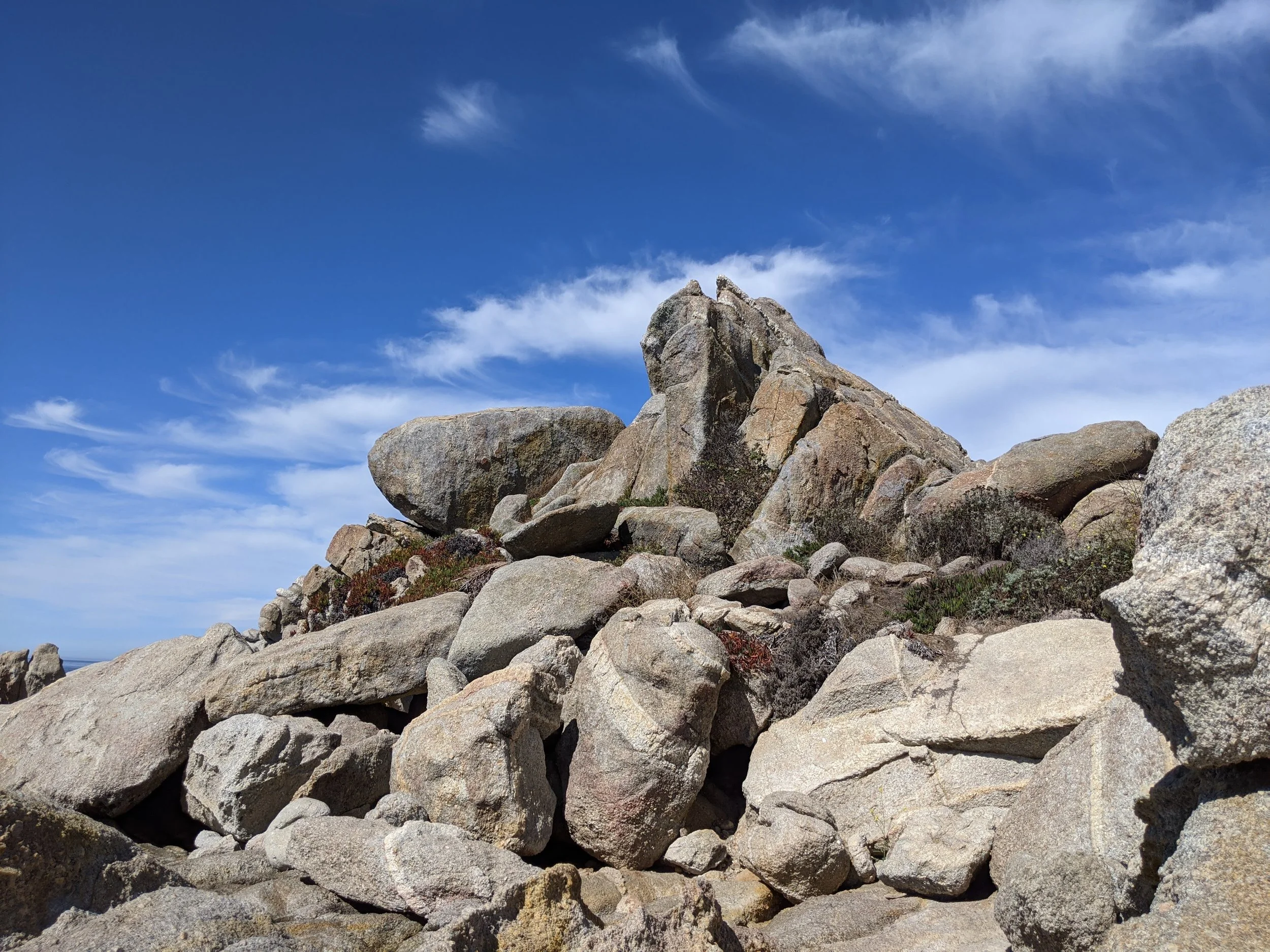Last week, we studied three reasons from Mark 15 that Jesus was crucified: to fulfill God’s plan, to save us, and to consume our darkness. Today, we will continue looking at three more.
4. To Make Access To God
35 And some of the bystanders hearing it said, “Behold, he is calling Elijah.” 36 And someone ran and filled a sponge with sour wine, put it on a reed and gave it to him to drink, saying, “Wait, let us see whether Elijah will come to take him down.” 37 And Jesus uttered a loud cry and breathed his last. 38 And the curtain of the temple was torn in two, from top to bottom. 39 And when the centurion, who stood facing him, saw that in this way he breathed his last, he said, “Truly this man was the Son of God!”
Some bystanders heard Jesus' cry that day and wondered aloud if he was calling for Elijah's help (35). So they gave him some sour wine to refresh him, hoping this would prolong his life long enough to see another supernatural manifestation come from his life (36). With that, Jesus uttered a loud cry -- John's gospel tells us Jesus cried, "It is finished!" (John 19:30). Then Jesus breathed his last (37). Mark carefully records some phenomena surrounding Jesus' death, and I want to focus on two of them that are found in this movement. First, the veil in the temple was torn from top to bottom (38). Second, the Roman centurion in charge that day, seeing the way Jesus died, said, "Truly, this man was the Son of God!" (39). This triumphant declaration is the point to which Mark has pointed his gospel. He started his book by saying Jesus is the Son of God (Mark 1:1), but throughout the book, no humans have confessed Jesus as God's Son. During Jesus' trial, the religious leaders asked him if he was God's Son. Jesus said that he was -- and even demons have made that connection in Mark -- but up to this point, Mark records no other human saying Jesus is the Son of God. But now, of all people, a Roman military official confesses Jesus as the Son of God. The Jewish religious leaders might've crucified him for saying he was God's Son, but the Gentile warrior confessed Jesus as God's Son. They were blind. But he saw. This is what the rending of the temple curtain is all about. That curtain signified separation. An elaborate system of sacrifices and ceremonies was erected as a way for the world to learn that God is holy and cannot be approached with sin on our hands. Our sin separated us from him. But when Jesus died, the veil was torn. Now, even a Gentile centurion can come to God through Christ. Jesus' death made a way for this man, and every man and woman, every background, every nationality, or any other marker humanity normally divides over, to come to God. Jesus' death makes the way for us to access God.
5. To Experience Death for Us
40 There were also women looking on from a distance, among whom were Mary Magdalene, and Mary the mother of James the younger and of Joses, and Salome. 41 When he was in Galilee, they followed him and ministered to him, and there were also many other women who came up with him to Jerusalem.
This little paragraph is Mark's way of setting us up for the resurrection, but also to tell us about his source material. These women were at the cross that day and would go to the empty tomb on Sunday morning. Mark says there were many other women there, but he mentioned three by name. One was Mary Magdalene, named as such because she was from Magdala, a village on the west coast of Galilee. Jesus had set her free from demonic oppression, and she had devoted herself to him ever since (Luke 8:2). A second was Mary, the mother of James the younger and of Joses. Her sons had become well-known in the early church, likely because of her teaching and instruction. A third was a woman named Salome. The other gospels tell us she was married to Zebedee, which makes her the mother of James and John (Matthew 20:20, 27:56). There are some indications she was the sister of Mary, Jesus' mother, making her Jesus' aunt (John 19:25). These women and many others followed Jesus and ministered to him (41). They were a big part of his ministry team, enabling him to focus on preaching, teaching, healing, and discipling. And they would be the first cluster of his followers to see him in his risen state.
42 And when evening had come, since it was the day of Preparation, that is, the day before the Sabbath, 43 Joseph of Arimathea, a respected member of the council, who was also himself looking for the kingdom of God, took courage and went to Pilate and asked for the body of Jesus. 44 Pilate was surprised to hear that he should have already died. And summoning the centurion, he asked him whether he was already dead. 45 And when he learned from the centurion that he was dead, he granted the corpse to Joseph. 46 And Joseph bought a linen shroud, and taking him down, wrapped him in the linen shroud and laid him in a tomb that had been cut out of the rock. And he rolled a stone against the entrance of the tomb. 47 Mary Magdalene and Mary the mother of Joses saw where he was laid.
Joseph's Courage Jesus' burial introduces us to a new follower of Christ, Joseph. He was a member of the Sanhedrin; Luke tells us he disagreed with the decision to kill Jesus (Luke 23:51). Marks tells us it took courage for him to ask Pilate if he could bury Jesus' body (43). The Romans often left the crucified’s carcass on the cross, so it was a bold move to ask Pilate to bend protocol. Joseph had also been a secret follower of Christ, and this move outed him as a man on Team Jesus. But Joseph made his move, and Pilate permitted him to bury Jesus in a tomb he owned, one cut out of the rock. Do not miss this aspect of Jesus' death. He was buried. He went into the grave. He did what billions have done before and after him -- he went down to death. Our Lord, our God, experienced humanity all the way to the point of humanity's gravest sorrow. He tasted death. He was embalmed and laid in the tomb. Our God died. Brothers and sisters, our Lord has gone before us to the grave. His death sanctifies death. Now, for believers, death is called sleep (cf.). We no longer have to be afraid or humiliated by death's decay, for our Lord has gone there before us. And death is not the final word. Jesus shows the way to loosen death's grip. Its anchors were dropped, but now they have been cut loose. Death has lost its sting because of Jesus (1 Cor. 15:55). He made the way to resurrection life. Jesus died to experience death for us.
6. To Make a New People
I want to conclude with a final reason why Jesus died -- it is scattered throughout our text today. In each scene, there are friends and foes of Christ. Some are against him, and some are for him. For every battalion that bludgeoned our Lord, there was a Simon who carried his cross. For every crowd that ridiculed Jesus, there was a group of women who loved Jesus. For every religious leader mocking Christ, there was a Joseph honoring Christ. This is another reason Jesus died—so that he could make a new people. Unfortunately, not everyone will love and follow him, but this passage helps us see that some will. Mark's audience—readers in first-century Rome and us as well—should conclude that we want to be on Team Simon, Team Mary, Team Salome, or Team Joseph. We should expect hostility, pain, and mockery because, well, that's what our Lord endured. We should expect people on all sides to stumble over his cross because people have stumbled over the gospel for thousands of years. We should expect moments when we must take courage to demonstrate our allegiance to Jesus because sometimes our devotion to Christ will out us to colleagues and communities. But we are Jesus' people. He died to fulfill God's plan. He died to save us. He died to consume our darkness. He died to make access to God. And he died to experience death on our behalf. So, he deserves our devotion and dedication. Let's be the new people he created by his blood.

